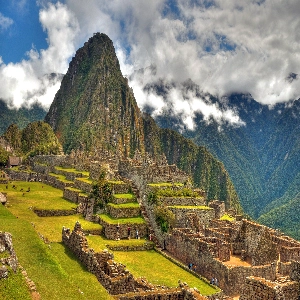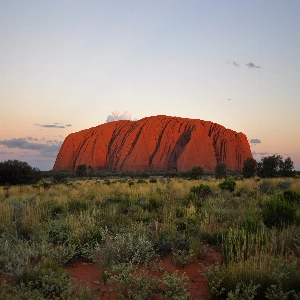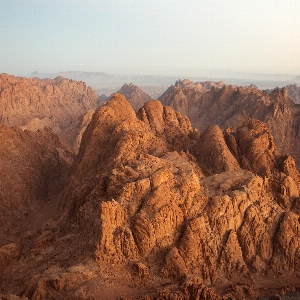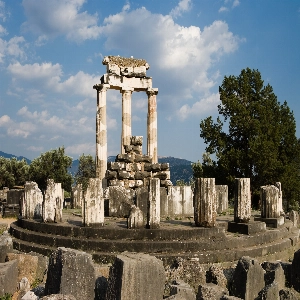Uluru Ayers Rock
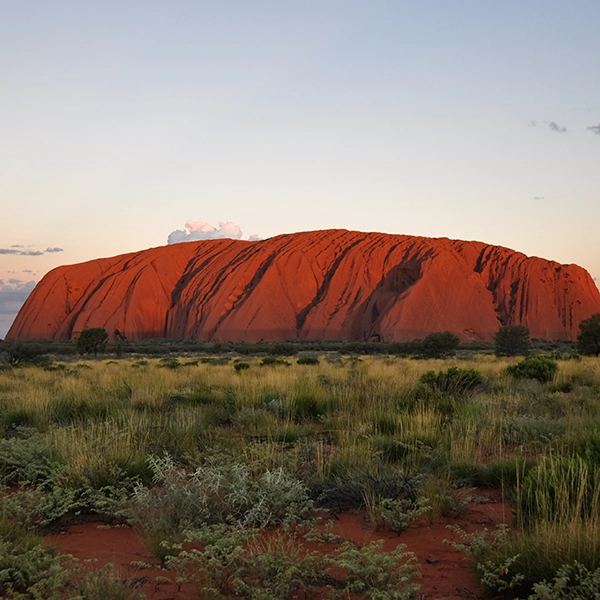
Introduction to Uluru Ayers Rock
Uluru, popularly known as Ayers Rock, is an iconic symbol of Australia's natural beauty and spiritual significance. Located in the heart of the Northern Territory, this massive sandstone monolith has been captivating the hearts and minds of tourists and locals alike for centuries. As a sacred site to the indigenous Anangu people, Uluru holds profound spiritual significance and is considered one of the most revered places in the country. Its rich history, unique geology, and stunning beauty make Uluru Ayers Rock an unforgettable destination for travelers from all over the world.
Historical and Cultural Significance of Uluru
Uluru has a long and fascinating history that dates back tens of thousands of years. Indigenous people have lived in the region surrounding the rock for centuries, and their timeless stories are deeply intertwined with the landscape. The Anangu people, the traditional custodians of the area, consider Uluru to be the physical embodiment of their ancestral beings and a direct link to their ancestors.
As a cultural landscape, Uluru is also marked by ancient rock art sites that depict animals, humans, and other symbols important to the Anangu people. These beautiful and sacred artworks serve as a testimony to their rich cultural heritage and provide valuable insights into their way of life. Recognizing the cultural importance of Uluru, the site was inscribed as a UNESCO World Heritage Site in 1987, not only for its natural attributes but also for the ongoing cultural and spiritual connections maintained by the Anangu people.
Geology of Uluru Ayers Rock
Uluru is a geological wonder that has been millions of years in the making. The massive inselberg, comprised primarily of arkose, a type of sandstone, formed about 550 million years ago during the Neoproterozoic era. The rock's composition also includes smaller amounts of conglomerate, shale, and siltstone.
Uluru's impressive size, reaching a height of 348 meters (1,142 feet) and extending to over 8 kilometers (5 miles) in circumference, along with its striking color changes throughout the day, make it a natural wonder worth experiencing. The unique geological processes that have shaped the rock, such as erosion and faulting, are still ongoing today. As a result, the appearance of Uluru continually changes, making it an ever-evolving part of the landscape.
Wildlife and Flora at Uluru
In addition to its cultural and geological significance, Uluru is home to a wide variety of unique plants and wildlife that have adapted to the harsh conditions of the Australian outback. The area surrounding the rock boasts more than 400 different plant species, many of which hold cultural significance for the Anangu people. For example, the desert oak tree, or kurkara in the local language, is an important habitat for wildlife and is used by the Anangu for making various tools and for construction purposes.
Uluru is also an important refuge for animals, both large and small. Visitors to the area can catch a glimpse of numerous bird species, reptiles, and mammals, such as the rufous hare-wallaby and the central rock-rat. The region is also inhabited by several endangered species, including the marsupial mole and the brush-tailed mulgara.
Visiting Uluru Ayers Rock
Uluru is located in the Uluru-Kata Tjuta National Park, approximately 335 kilometers (208 miles) southwest of Alice Springs. The best way to experience the beauty and sacredness of Uluru is to take a guided tour led by a local Anangu guide who can share their ancestral stories and knowledge of the region. Additionally, the park offers several self-guided walks, including the popular base walk, that allow visitors to explore the area at their own pace.
Accommodation options near Uluru include the Ayers Rock Resort, which offers a range of lodging options from luxury hotels to budget-friendly campgrounds. The resort also organizes a variety of activities and cultural experiences, such as sunrise and sunset viewings of the rock, camel tours, art workshops, and bush tucker tastings.
It is essential for visitors to respect the cultural significance of Uluru and abide by specific guidelines established by the Anangu people. For instance, climbing Uluru was officially banned by the park in 2019 to protect its cultural, environmental, and safety values. Photography of certain sacred spaces is also restricted within the park.
Preservation and Future of Uluru Ayers Rock
Uluru represents a delicate balance between cultural preservation, environmental conservation, and tourism. As a symbol of Australia's rich Aboriginal history and identity, its preservation is essential for future generations to appreciate and understand. The partnership between the Anangu people and the Australian government in managing the Uluru-Kata Tjuta National Park aims to protect and uphold the cultural values, ecosystems, and natural beauty of Uluru for generations to come.
In conclusion, Uluru Ayers Rock is a testament to the enduring spirit and rich cultural heritage of Australia's indigenous people, and its incredible natural beauty and geological wonders make it a must-see destination for travelers from around the world.



